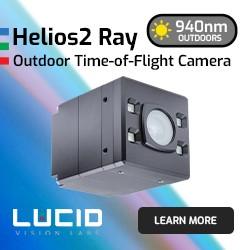Unveiling Vulnerabilities: A Deep Dive into the Necessity of VAPT for IoT in Manufacturing
The rise of IoT devices brings both convenience and security challenges. This article explores how Vulnerability Assessment and Penetration Testing (VAPT) helps safeguard these devices against cyberattacks. It also details best practices to secure IoT devices and emphasizes the importance of regulatory compliance.
In today's digital landscape, the proliferation of IoT (Internet of Things) devices has brought unparalleled connectivity and convenience. From smart homes to industrial automation and healthcare, IoT devices have seamlessly integrated into various sectors, transforming the way we live and work. However, this increased interconnectivity has also introduced a myriad of security challenges, necessitating robust Vulnerability Assessment and Penetration Testing (VAPT) strategies to safeguard against potential threats.
Introduction to IoT and VAPT
The Internet of Things (IoT) marks a paradigm shift in device interaction, creating a network where a variety of devices, from consumer gadgets to industrial machinery, embed sensors, software, and connectivity features. These devices exchange data, fostering automation, remote monitoring, and data-driven decision-making. Wearables like fitness trackers and industrial sensors also fall under the IoT umbrella, contributing to smart environments that optimize processes and enhance efficiency.
The core essence of IoT lies in the seamless connectivity and communication between these devices. Through a network, information is shared, enabling automation, remote monitoring, and data-driven decision-making. This interconnectivity is the backbone of the IoT ecosystem, facilitating the creation of smart environments that optimise processes, enhance efficiency, and improve convenience.
Vulnerability Assessment and Penetration Testing (VAPT) is an essential aspect of cybersecurity that involves a systematic evaluation of systems, networks, and applications to identify and address potential vulnerabilities.
It's a proactive security approach that encompasses various methodologies:
Vulnerability Scanning:
This involves using automated tools to scan networks and devices to identify known vulnerabilities. It's an initial step to detect weaknesses that could be exploited by attackers.
Penetration Testing:
Penetration testers, often referred to as ethical hackers, simulate real-world attacks to uncover vulnerabilities that might not be detectable through automated scans. They attempt to exploit weaknesses to evaluate the system's resilience against actual threats.
Risk Assessment:
Vulnerability Assessment and Penetration Testing (VAPT) includes evaluating both the potential impact and likelihood of exploitation associated with identified vulnerabilities. This step aids in prioritising and addressing the most critical security risks.
Why do we need IoT security?
To ensure the effective functioning of IoT objects, it is essential to secure hardware, software, and connectivity. In the absence of proper security measures, connected objects, ranging from refrigerators to manufacturing bots, are vulnerable to hacking. If hackers successfully gain control, they can exploit the object's functionality and compromise the user's digital data.
Best Practices for Securing IoT Devices
Ensuring the security of IoT devices requires implementing robust best practices that mitigate vulnerabilities and strengthen overall defences.
Implementing Strong Authentication and Access Controls
Robust authentication mechanisms, including multi factor authentication (MFA) and strong encryption for data in transit and at rest, are fundamental in securing IoT devices. Strong access controls restrict unauthorised access and reduce the risk of exploitation.
Encouraging Manufacturers to Prioritise Security
Manufacturers play a crucial role in bolstering IoT security by integrating strong security measures into the design and development phases. This proactive approach ensures that devices are equipped with strong security measures from their inception, minimising vulnerabilities.
Regular Security Audits and Updates
Frequent security audits and updates for IoT devices are crucial in addressing newly discovered vulnerabilities. Regular audits involve vulnerability assessments, penetration testing, and code reviews to identify and rectify potential weaknesses. Timely firmware and software updates patch known vulnerabilities, thereby fortifying device security.
By following these best practices, organizations and manufacturers can substantially decrease the attack surface and improve the overall security posture of IoT devices.
Conclusion
Ensuring adherence to regulatory standards is essential, not just to prevent legal consequences but also to bolster data security and build trust with consumers and stakeholders. Adhering to these regulations fosters a culture of responsible data handling and reinforces the commitment to protecting user privacy and data integrity within IoT ecosystems.
Conclusively, it is crucial to navigate the regulatory landscape and adhere to best practices when implementing enhanced VAPT strategies, as these steps are essential for fortifying the security of IoT devices. Embracing proactive security measures, continuous advancements in VAPT methodologies, and robust compliance frameworks are imperative to safeguard against evolving threats in the ever-expanding realm of IoT.
Ready to fortify your manufacturing IoT against cyber threats? Dive into proactive security measures with our VAPT services. Elevate your defence strategy, secure your processes, and stay resilient in the digital era.
To know more click here!
Featured Product

